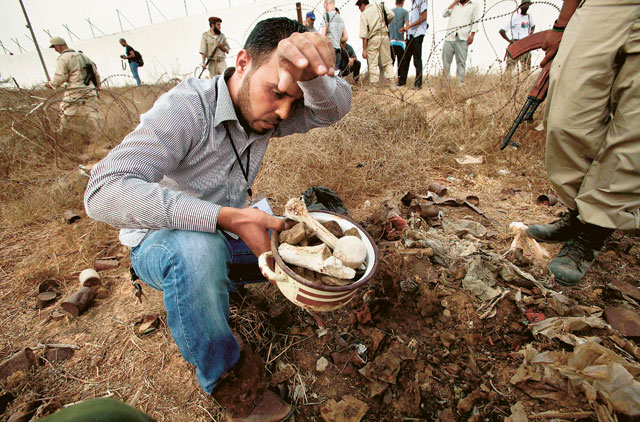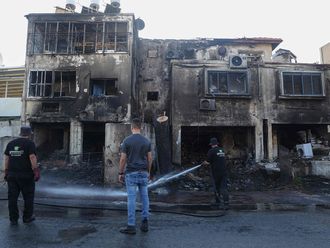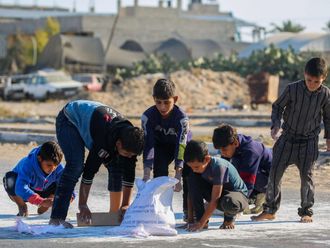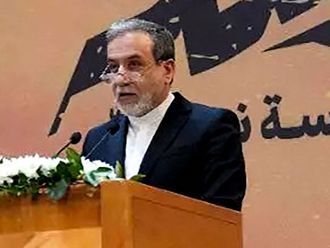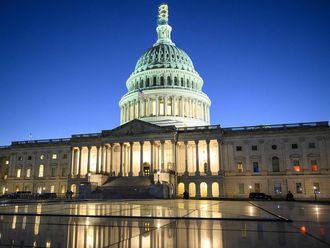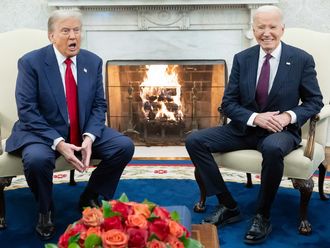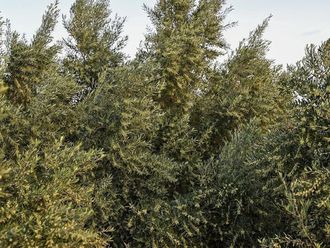
Tripoli: Libya's new rulers on Sunday revealed a grave site they said contained the bodies of more than 1,270 people killed by Muammar Gaddafi's security forces in a 1996 massacre at Tripoli's Abu Salim prison.
Small heaps of weathered bones — some pulled from the earth by relatives of those killed and anti-Gaddafi revolutionaries who flocked to the site — dotted a dusty, wind-whipped field outside the prison.
The massacre 16 years ago was covered up for years but ultimately it helped topple Gaddafi because the rebellion that ended his rule was rooted in anger about the Abu Salim killings.
"I am happy this revolution succeeded, and that our country will be better," said 45-year old Sami Al Sa'adi, who believed two of his brothers perished in the massacre. "But when I stand here, I remember my brothers who were killed."
Prayer for the dead
"Allahu Akbar [God is greatest]!" shouted anti-Gaddafi fighters who approached the site. Several lay down their weapons and performed the Muslim prayer for the dead before venturing among the unearthed remains.
Officials said the remains of those killed were spread across a piece of ground measuring one square kilometre, and had been dug up from within the prison's internal walls and reburied just beyond them in 2000.
"We are dealing with more than 1,270 martyrs and must distinguish each one from the other for identification by comparing their DNA with family members," said Dr Othman Abdul Jalil, a medical official. "It may take years to reach the truth."
The bloodletting at the prison — which looms over a district of the capital known for its loyalty to Gaddafi — has taken on iconic significance for Libya's new rulers, whose uprising against him first erupted when families of inmates killed at Abu Salim demonstrated in the eastern city of Benghazi to demand the release of their lawyer.
Inmates rose up against their jailers in June 1996 and were gunned down by forces led by some of Gaddafi's inner circle, according to the accounts of former inmates which have emerged since then.
Broadcast outlets
Abdul Wahab Al Qa'id, whom officials introduced as a survivor of the events at Abu Salim, told reporters he avoided being shot only because he was wounded before the mass execution.
He said the killers were directed by Gaddafi's intelligence chief, Abdullah Al Sanussi, and Abdullah Mansour, a senior intelligence official who also controlled Libya's broadcast outlets.
"When they took me out on a stretcher, Abdullah Mansour was calling out, ‘The bullets will be coming'," he said.
Khalid Al Sharif, spokesman for the Tripoli Military Council, said investigators had found the site about two weeks ago, relying on information from people detained on suspicion of involvement in the massacre in some way.
"The groups that did the killing, that took part, some of them are in the custody of the revolutionaries and confessed and led us to this place," he told reporters at the site. "Some of those involved in burying them also led us here."
Since the ouster of Gaddafi last month, about 13 sites have been identified as mass graves. How they came into being is the subject of dispute and conflicting explanations even within the country's ruling National Transitional Council (NTC).


